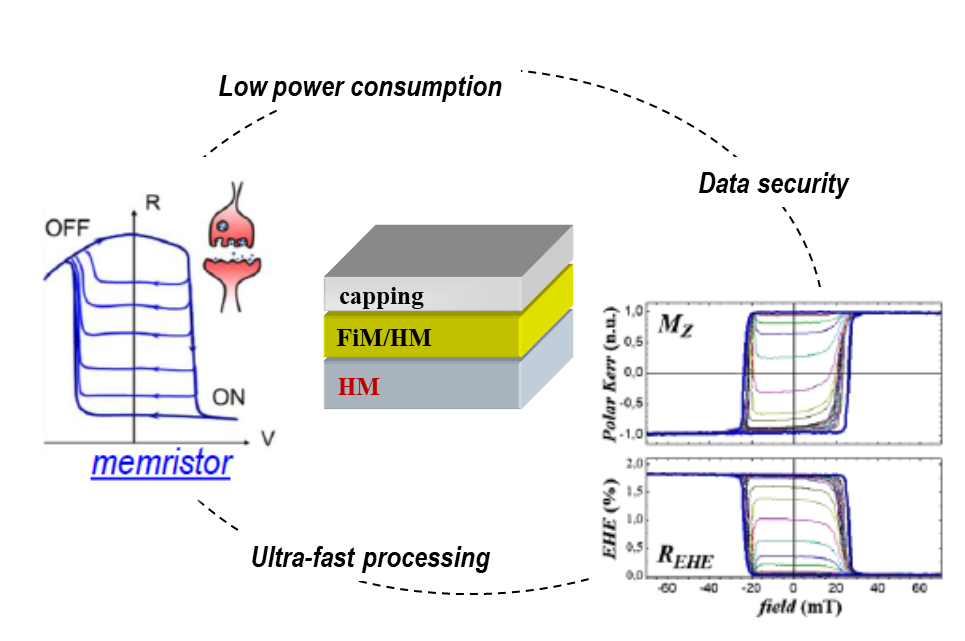RESEARCH PROGRAMMES
P4:Nanomagnetism and critical raw materials
P5: Solid state quantum devices for information
RESEARCH SUPERVISOR(S)
Dr Lucas Pérez
Research Group website: https://nanociencia.imdea.org/electrodeposited-nanowires/group-home
Dr Paolo Perna
Research Group website: https://nanociencia.imdea.org/spinorbitronics/group-home
Dr. Mariela Menghini
Research Group website: https://sites.google.com/view/transportqm-imdeanano/
RESEARCH TOPIC DESCRIPTION
Technologies based on artificial neural networks are considered to be a promising direction for future artificial intelligence. Artificial synapses and neurons are the building blocks of neuromorphic computation and, therefore, their development is key for the implementation of this technology. Domain-wall spintronics has brought different strategies to the field. In particular, spin-orbit-torque (SOT) magnetization switching and domain wall motion in ferromagnetic materials have been implemented for mimicking both synapses and neurons. However, ferromagnets have two main drawbacks for their integration in computing: the large current density needed for magnetization reversal and the long switching times. On the contrary, in ferrimagnets (FiM), close to the magnetic moment compensation, SOTs are enormous and the velocity of domain walls extraordinarily high, making FiMs potential candidates for developing ultra-fast and energy-efficient spintronic applications.
The aim of the proposed research is to design, fabricate and characterize both synapses and neurons based on magnetic switching in Gd-based ferrimagnets. The field-free switching mechanisms (SOT, optical and geometrical switching) will be previously explored to have an insight into the physical mechanism underlying the magnetization dynamics.
POSITION DESCRIPTION
The candidate should have a PhD in Physics or Material Science or in a closely related field of science. An ideal candidate will have previous experience in Condensed Matter Physics, Nanomagnetism or Nanodevices. Practical skills on growth, nanofabrication as well as transport and optical characterization will be an advantage for the development of the project. Candidates with a strong publication record and a systematic research attitude are encouraged to apply. Furthermore, the ability to work on an interdisciplinary topic and international environment, analytical but creative thinking and effective communication skills are also important.
PARTNER ORGANIZATIONS
Within this project we foresee visits and/or secondments to institutions from the network of the involved research groups such as CNRS-Thales, NamLab-Dresden, FZJ-Julich, SPINTEC-Grenoble, FZU-Prague, Uni-Duisburg, as well as the participation in synchrotron experiments at ALBA, SOLEIL, ESRF, BESSY and ELETTRA.
The project’s framework is ensured by the participation of the research groups in national and EU projects as EU FLAGERA SOgraphMEM (coordinated by Prof. Perna), national ECLIPSE-ECoSOx (PIs: Prof. Perna and Dr. Menghini), PID2020-117024GB-C43 (PI: Prof. Perez), TED2021-130957B-C52 (PI: Prof. Perez) and regional NanoMagCOST-CM (PI: Prof. Perna), Nmat2D projects. Also, the hosting groups are active within the Spanish (SpinRed2) and the EU (The Spintroinc Factory, Graphene Flagship) networks.

